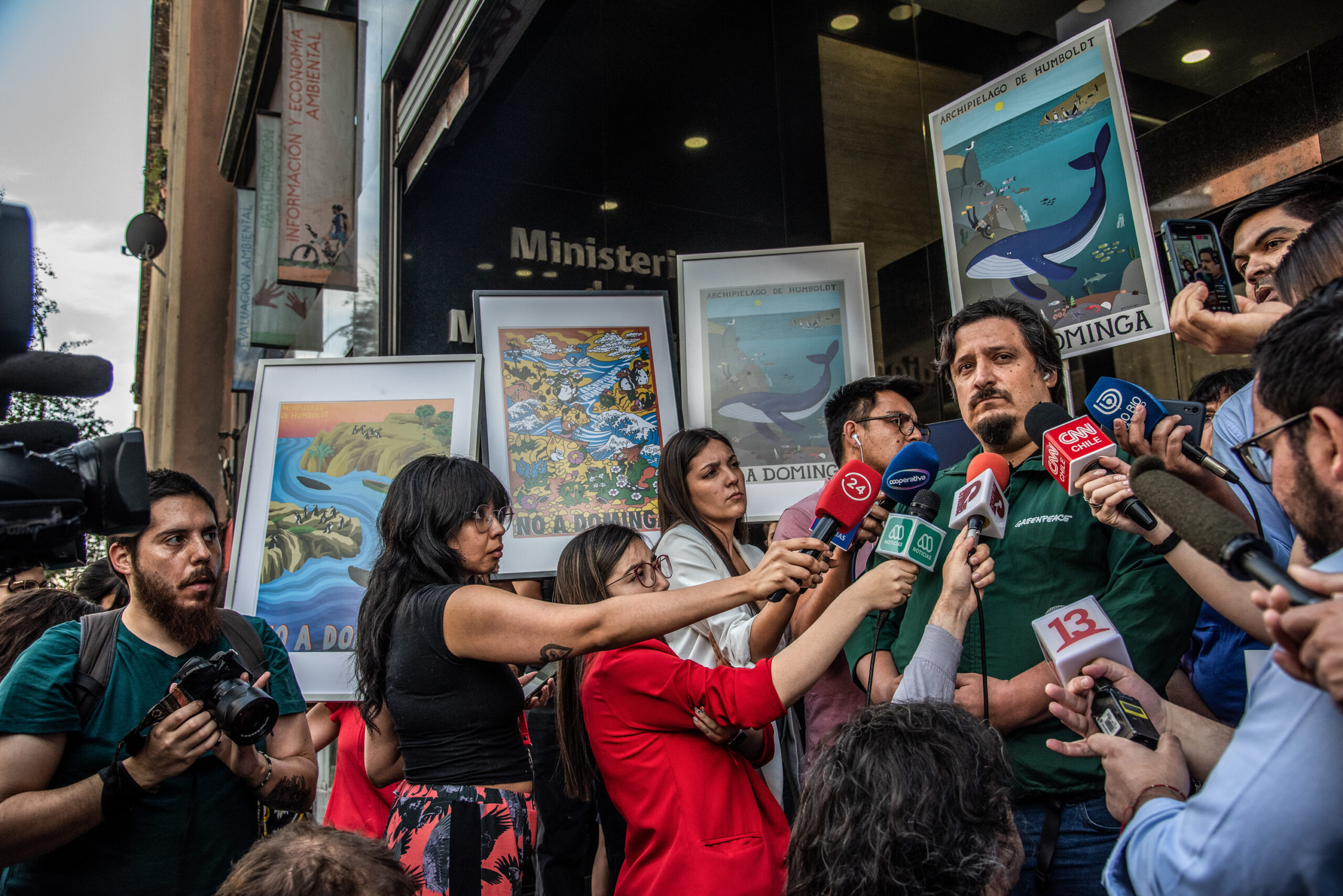In the vast and often conflict-ridden landscape of environmental defense in Argentina, few figures have managed to maintain two decades of relevance and visibility like Hernán Giardini. His name has become synonymous with the fight for native forests, but reducing his profile solely to that of an activist would oversimplify the complexity of his work. Giardini is a strategist of public communication, a political articulator, and, above all, a translator of realities: he is the one who takes the technical complexity of a threatened ecosystem and turns it into a cause capable of mobilizing millions.
As the Forest Campaign Coordinator at Greenpeace for 20 years, Giardini has been on the front line of the most acute conflicts over land use in the region. His work consists of confronting an adverse reality marked by deforestation, intentional fires, and the systematic reduction of biodiversity. However, his approach is not one of passive resistance but of active influence, using every democratic and media tool available to stop the destruction.
The making of the social communicator
To understand Giardini’s effectiveness today, it is necessary to look back at his training and early steps. With a degree in Communication Sciences from the University of Buenos Aires (UBA) and a background in journalism, he understood early on that the environmental struggle is, to a large extent, a struggle over meaning and information.
Before becoming the visible face of Greenpeace on these issues, Giardini shaped his character in the realm of grassroots communication. He collaborated actively with social movements, recovered factories, and rural and Indigenous organizations. That stage was his school of “territorial articulation.” There he learned that a campaign is not won through headlines alone but by weaving networks with those who inhabit the territory.
His entry into the environmental organization came through a call from the public policy and research area. It was the perfect meeting point where his professional interests and activist vocation converged. Since then, he has dedicated his career to designing strategies, leading investigations, and acting as spokesperson before a spectrum of stakeholders ranging from business leaders and legislators to the most isolated local communities.
The Forest Law: A milestone of political management
If there is one chapter that defines the relevance of Giardini in modern Argentine history, it is his role in securing the National Forest Law in 2007. This event marked a turning point in the country’s environmental protection, and Giardini was a crucial engine behind the machinery that made it possible.
The strategy he deployed to achieve this regulation is a case study in effective public pressure. Confronting powerful economic lobbies, Giardini and his team orchestrated an unprecedented communication offensive. The numbers speak for themselves: in just a month and a half, they managed 175 media stories, 93 of which were published in major national and provincial outlets. The objective was clear: break the silence and force political debate.
“All to make the issue known,” Giardini recalls of that effort. But his work did not end with the law’s approval. Understanding that a law without enforcement is an empty declaration, he continued pressing for the implementation of provincial regulations in critical districts such as Santiago del Estero, Salta, and Chaco, where the agricultural frontier advances most aggressively.
Beyond the trees: Glaciers and justice
Giardini’s influence did not stop at the forest line. His capacity for mobilization was tested again with the Glacier Law (Law 26.639), enacted in 2010. Although he humbly acknowledges that Greenpeace’s role in this cause was shared with the tremendous momentum of socio-environmental assemblies, his contribution in articulation and public messaging was decisive.
Through campaigns in which he participated actively, 1.5 million signatures were collected, a historic figure that demonstrated the awakening of widespread environmental awareness. This law was fundamental because it established the Minimum Standards Regime for the preservation of glaciers and the periglacial environment, recognizing them as strategic freshwater reserves and prohibiting high-impact industrial activities such as mining and hydrocarbons.
On the judicial front, Giardini has also made his mark. A clear example was the complaint filed before the Supreme Court in 2019 over illegal clearing in Chiguayante. This action sought to expose the impunity with which certain sectors operate, bringing the discussion of environmental crimes before the highest judicial body in the country.
The current landscape: Fighting impunity
Today, Giardini’s work takes place in a context of extreme urgency. The data handled by his team is alarming: more than half of Argentina’s deforestation occurs illegally, openly challenging the laws that were so hard to secure. Added to this is the tragedy of forest fires, 95% of which originate from human causes, whether through negligence or intent.
Under his coordination, Greenpeace’s annual reports have become an indispensable tool of civic oversight. These reports, based on concrete data and satellite monitoring, are the only barrier preventing destruction from occurring in total obscurity. Giardini warns of a “contagion effect” in some provinces, where there is a tendency to relax environmental measures and, even more concerning, to persecute Indigenous peoples who defend their territories.
Life philosophy and adaptation
Behind the political strategist lies a person deeply connected to what he defends. Twelve years ago, Hernán Giardini chose to settle in Bariloche, Río Negro. It was not a casual decision; living there allows him to remain in direct contact with the nature he is passionate about. A lover of forests and mountains, he practices trekking regularly, finding in the Patagonian landscape the energy required to sustain a struggle that is often exhausting.
His profile is further completed by an artistic and curious side: an amateur musician with ten years of percussion practice and an avid traveler. These human dimensions give him a particular sensitivity for communication. His trajectory in media also remains active; since 1997 he has worked in radio and currently coordinates, produces, and hosts on Radio Piuke, keeping his journalistic craft alive.
However, Giardini is not naïve about the future. His analysis of the post-pandemic landscape is blunt and lucid. “The pandemic was not a strong enough blow to generate systemic change,” he reflects. He observes with concern the rise of individualism that hinders collective action.
Faced with this challenge, far from giving in, his response is innovation. Giardini dedicates his days to “refreshing” the campaign, seeking new ways to tell what is happening. His professional obsession is preventing the message from wearing out, adapting communication to a fragmented media landscape to reach new audiences. In a world that seems to accelerate toward ecological collapse, the figure of Hernán Giardini stands as a persistent reminder that organized, strategic human will is the only force capable of stopping destruction.



